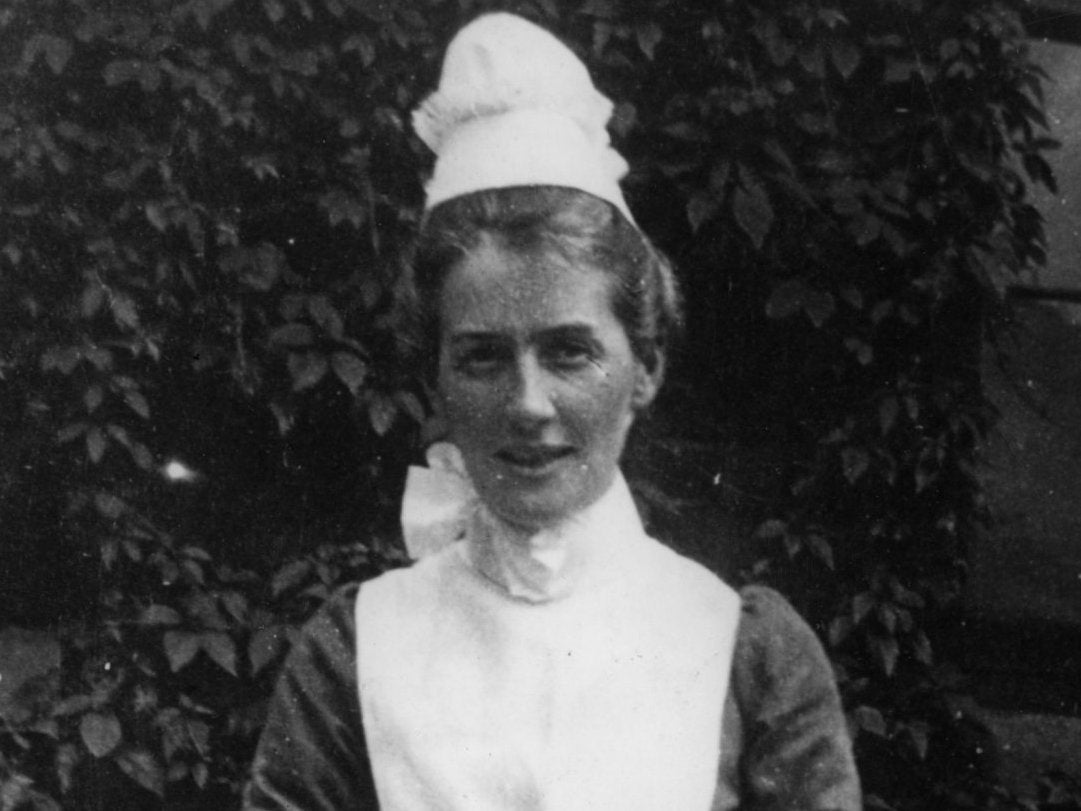Who was Edith Cavell? Google Doodle celebrates heroic British nurse who sacrificed life in First World War
Carer driven by Anglican faith to save lives on both sides of brutal conflict

Edith Cavell, the British nurse who helped thousands of Allied soldiers escape from German-occupied Belgium in the First World War, was born on 4 December 1865.
The subject of the latest Google Doodle, Cavell was raised in the village of Swardenton, Norfolk, the eldest of four children and worked first as a governess in Brussels between 1890 and 1895.
She was inspired to take up caring aged 30 when her father, the Reverend Frederick Cavell, was taken ill.
Training under Eva Luckes, a friend of Florence Nightingale, at the Royal London Hospital in Whitechapel, she first worked at hospitals in Shoreditch, Kings Cross and Manchester before returning to Brussels to lead a new training hospital, L’Ecole Belge d’Infirmieres Diplomees at Ixelles. It was here she founded the medical journal L’Infirmiere in 1910.
Visiting her widowed mother Louisa Sophia in England when war was declared on 28 July 1914, she returned to Belgium and vowed to help all casualties, regardless of nationality, compelled by her Anglican faith to ease the suffering no matter what: “I can’t stop while there are lives to be saved.”

Her efforts soon took her beyond tending to the wounded for the Red Cross. After meeting with underground resistance operatives, she helped some 200 British and French troops flee for the neutral Netherlands, the men given false papers by Prince Reginald de Croy at his chateau of Bellignies near Mons and sent on their way.
Cavell was arrested on 3 August 1915 after being betrayed by informant Gaston Quien and imprisoned for ten weeks at Saint-Gilles, her final 14 days spent in solitary confinement.
She was charged with treason under the German Military Code, found guilty by a military court after admitting her actions and executed by firing squad at Schaerbeek on 12 October 1915 when appeals for mercy were ignored. The British government found itself powerless to intervene.
“Patriotism is not enough. I must have no hatred or bitterness towards anyone,” she said on the night before her death, words spoken to the Reverend Stirling Gahan as he gave her Holy Communion and now inscribed on her memorial at St Martin’s Place, Trafalgar Square.
Her body was returned to Britain and, following a service at Westminster Abbey, buried at Norwich Cathedral. Her cause was subsequently used on British propaganda posters to encourage new recruits to sign up and join the fight for which she had so valiantly laid down her life.
As the centenary year of the war’s end draws to a close, Edith Cavell’s heroism and selfless devotion to her cause deserves to be remembered once more.
Join our commenting forum
Join thought-provoking conversations, follow other Independent readers and see their replies
Comments